Joe Biden’s huge bet: the economic consequences of ‘acting big’
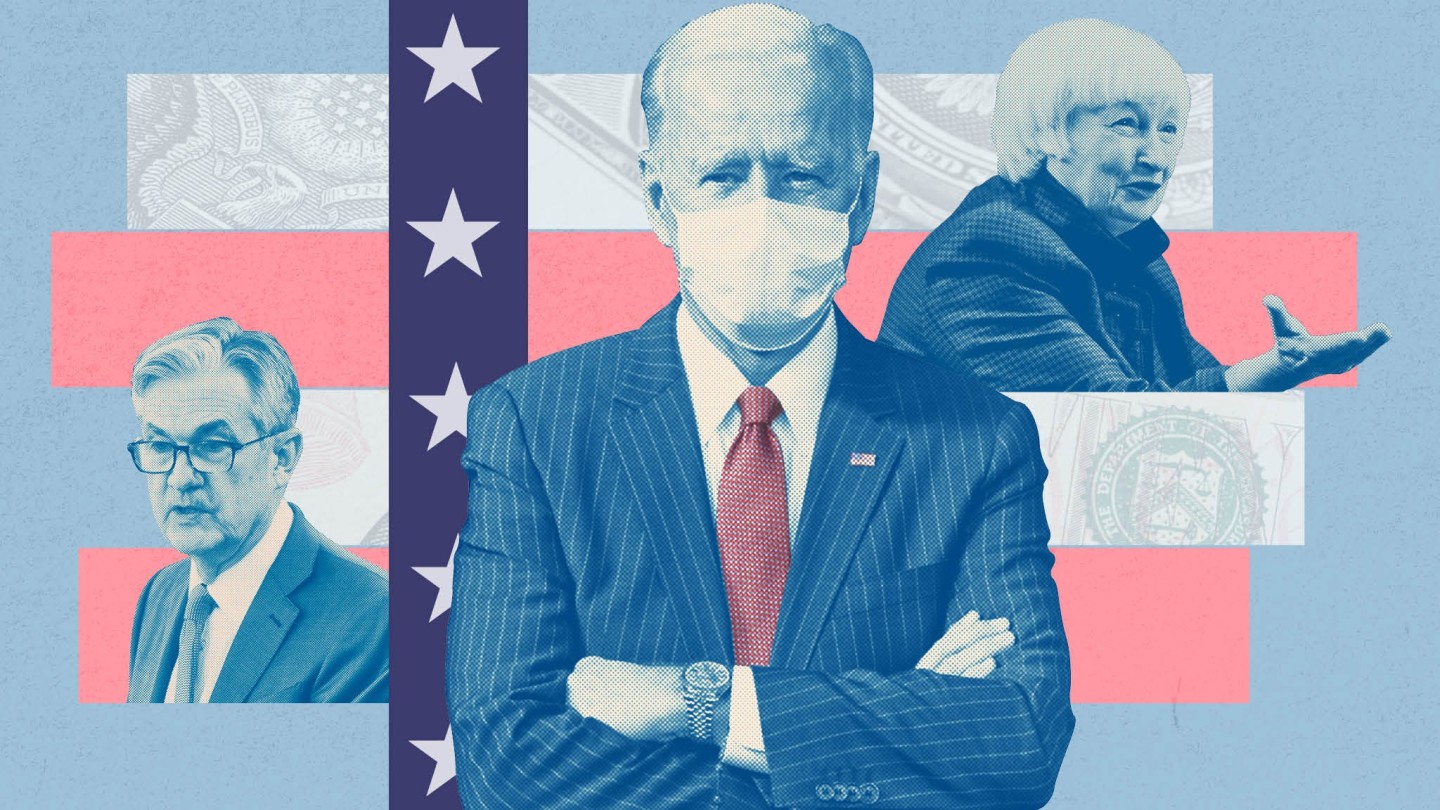
Simply sign up to the US economy myFT Digest -- delivered directly to your inbox.
Joe Biden’s strategy for the US economy is the most radical departure from prevailing policies since Ronald Reagan’s free market reforms 40 years ago. With plans for public borrowing and spending on a scale not seen since the second world war, the administration is undertaking a huge fiscal experiment. The whole world is watching.
If Biden’s coronavirus recovery plans are vindicated, they will demonstrate it is possible to “build back better” from the pandemic and that advanced economies have been overly obsessed with inflation for the past 30 years. It will put government back at the heart of day-to-day economic management.
If the plan comes off, it will show that unnecessary timidity in recent decades has let millions suffer unnecessary unemployment, starved many areas of opportunities for improved living standards and widened inequalities.
But if the strategy fails, ending in overheating, high inflation, financial instability and the economics of the 1970s, the US experiment of 2021 will go down as one of the biggest own goals of economic policymaking since François Mitterrand’s failed reflation in France in 1981.
Biden’s $1.9tn borrowing and spending plans have not been dreamt up on university campuses but are the result of a delicate political balance in a divided Congress. Any new stimulus figure much lower than the planned 9 per cent of gross domestic product risks losing more votes from Democrats than it would gain from Republicans. “This is what he can get done when he has razor-thin majorities to deal with,” says Professor Kenneth Rogoff of Harvard University.
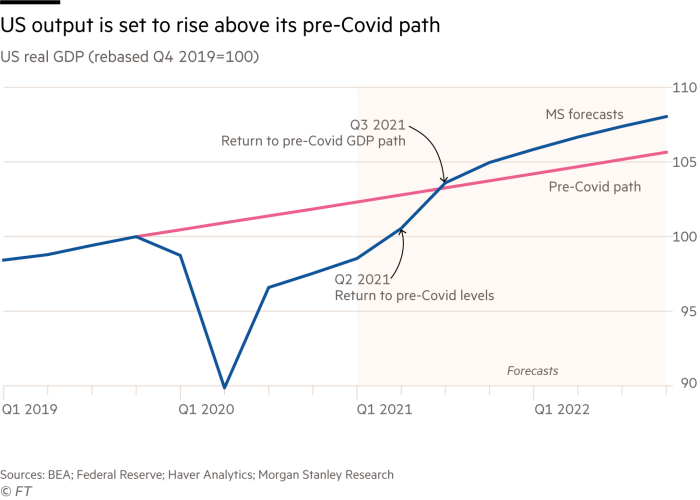
The new administration is making the case that the stimulus plan is an extension of the “high-pressure economy” Janet Yellen advocated in 2016, when she chaired the Federal Reserve, which was a response to the insipid recovery after the financial crisis. The administration believes that this is the best way to ensure a full recovery from the Covid-19 crisis with few lasting scars. Now with Yellen as Treasury secretary, “act big” is the new slogan and the US economic policymaking establishment is on board.
Jay Powell, the current Fed chairman, stressed last week the need for “patiently accommodative” monetary policy, signalling that the US central bank was in no mood to take away the punchbowl by raising interest rates before the party got going.
Growth expectations
The plans have left economic forecasters in a quandary. The IMF and OECD have recommended looser fiscal policy to aid the recovery, but not so far on the scale planned by the US. The non-partisan Congressional Budget Office forecasts, which included only the final Trump stimulus in its latest forecasts, already expected the US economy to grow sufficiently fast this year to regain the pre-pandemic level of output by summer. It also expected the US economy to recover all of the lost ground from the Covid-19 pandemic by 2025 with no permanent scars. If former president Donald Trump’s stimulus plans were sufficient to make up the lost ground, the question is what an additional stimulus of 9 per cent of national income will achieve.

The CBO has not yet given its view, but academics and private sector economists are increasingly taking a stance. Consensus Economics reports positively that independent forecasters have raised their expectations of US economic growth for 2021 and 2022 with barely any additional inflation.
Ellen Zentner, chief US economist of Morgan Stanley, argues that the high-pressure economy will raise US output by the end of next year almost 3 per cent above the level that she had pencilled in before the coronavirus crisis. She assumes the Fed would not seek to rein in the rapid growth rates. The contrast with the 2008-09 financial crisis is striking. In the decade after that crisis, the US economy, along with almost all other advanced economies, did not manage to return to the pre-crisis path of output.
In the halls of academia, the vast scale of the US experiment is much more controversial and has created shifts in allegiances within the economics profession that few could have predicted even a month ago.
There is little surprise that Paul Krugman, the economics Nobel laureate, would support the Biden plan, arguing that there was only weak evidence for the theory that low unemployment rates raise wages and then inflation. This view, he said, was “mostly wrong”, leading to policy being overly “constrained by the fear of a ’70s repeat”.
But his support for the Biden plan is matched almost as fully by Rogoff, who became famous during the global financial crisis for warning of the dangers of high levels of public debt. He says “we are in a different world today”, with much lower interest rates and a highly partisan politics. “I’m very sympathetic to what Biden’s doing,” Rogoff adds, even though there was a long-term cost to additional public debt and a risk of higher inflation. “Yes, there is some risk we have economic instability down the road, but we have political instability now.”
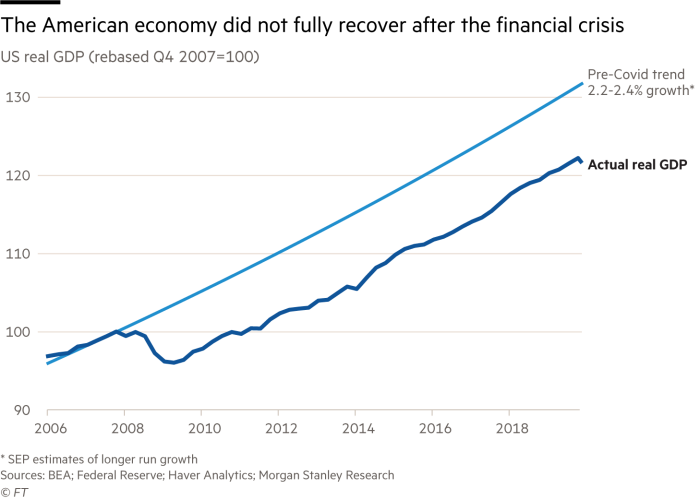
Sceptical voices
Among those looking enviously across the Atlantic are Europeans who worry that the eurozone will once again fall short of the US in terms of policy action and results. Erik Nielsen, chief economist of UniCredit, says that with the EU fiscal support around half the size of that in the US, Europe is now “frozen with fear”, which is likely to lead to “another three to five years of European growth underperformance relative to the US”.
Lined up on the other side of the argument are several economists who have been hitherto the most vocal supporters of public borrowing and spending. Larry Summers, a former Treasury secretary who was one of Barack Obama's leading economic advisers in the aftermath of the financial crisis, has spent much of the past decade warning about “secular stagnation”, the view that advanced economies were stuck in a semi-permanent rut and needed more stimulus. But now that stimulus is on the cards, he has warned it has gone too far and is likely to trigger “inflationary pressures of a kind we have not seen in a generation”, which would also limit the “space for profoundly important public investments”.
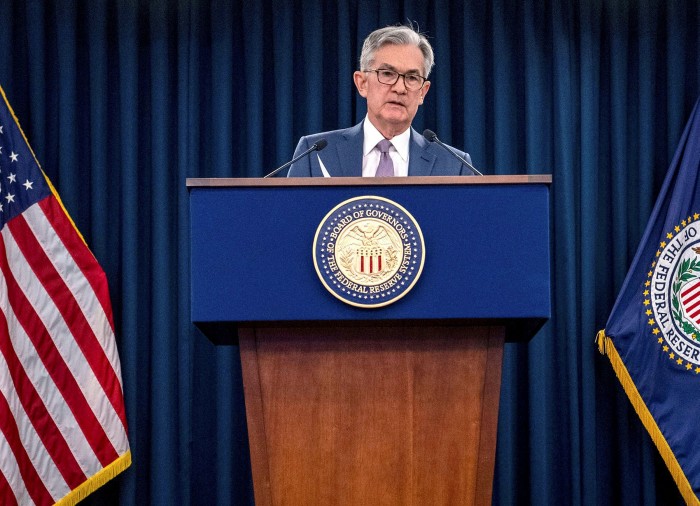
Olivier Blanchard, former IMF chief economist who ignited the global fiscal stimulus debate in 2019 with his presidential address to the American Economics Association, accepts that he is known to be supportive of higher public debt. Nevertheless, he warns that Biden’s “$1.9tn programme could overheat the economy so badly as to be counterproductive”.
Some economists fear these sceptical voices will dissuade Europe from adopting the fiscal stimulus they think it needs to recover fully from the pandemic. Adam Posen, head of the Peterson Institute for International Economics, worries that fiscal conservatives in Europe will seize on any rise in inflation or signs of waste in the programme. “Delivery of good results doesn’t generate the same groundswell as a conservative warning,” he says. “I’d hate for [the Biden plan] to get a bad reputation abroad.”
Supporters of the plan, especially those looking at it from an international perspective, have worked hard to justify the scale of the fiscal stimulus. Core to the argument for “going big” is the evidence of the past decade that countries have much more room for economic growth and lower unemployment before there is any inflationary pressure. In the US, the unemployment rate fell to 3.5 per cent in early 2020 before the pandemic, its lowest in 50 years, without any sign of inflation rising.
The European Central Bank has struggled to raise inflation close to its 2 per cent target, leading many to think there has been insufficient fiscal stimulus. This suggests economists and policymakers have persistently underestimated the output gap, the economic concept that estimates the degree to which economies are functioning below a level that would keep inflation stable.
Robin Brooks, chief economist at the Institute of International Finance, which represents the world’s largest financial institutions, has run a campaign on what he calls “nonsense output gaps”, especially in southern Europe, estimated by the IMF and others. He says there was always more scope for expansionary fiscal policies without inflation and that the low output gap estimates have prevented growth and prosperity, further undermining countries’ public finances.
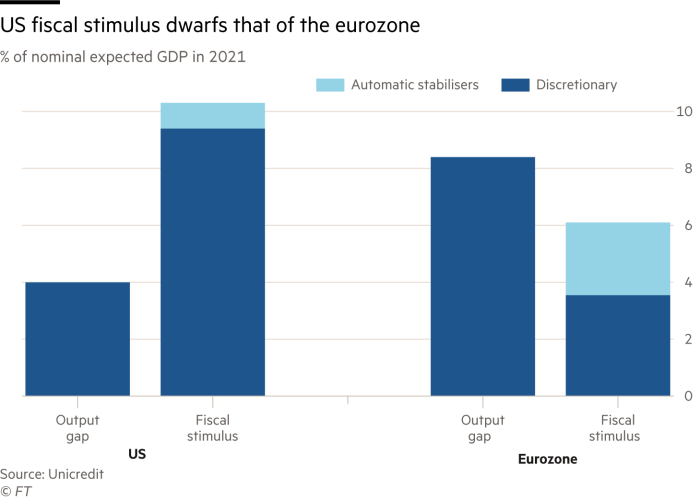
“Output gaps are a key input into whether and how much overheating we might get,” he says. While he believes the US debate on overheating is appropriate, Europe can afford much more stimulus without inflation. If it continues along existing lines and does not follow the US, he says: “Europe will get a repeat of sluggish recovery after the financial crisis.”
Alongside the potential for larger output gaps, another defence of big stimulus is that government spending, particularly on investment projects, can itself raise the speed limits of economies before they generate inflation.
If the Biden plan can demonstrate it has generated more capacity for higher and greener future growth rates, that would be the holy grail of government intervention, says Mariana Mazzucato, professor of economics at University College London. Do it right, she says, and there are huge benefits available.
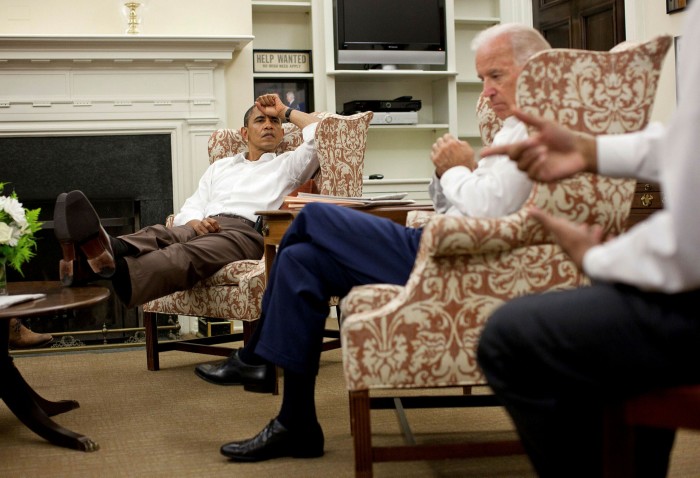
“You’re not just flooding the system with liquidity, but reaching the real economy and creating a stronger industrial base,” she says. “That’s the kind of thing we want to see — expanding capacity and preventing inflation.”
The arguments in favour of the Biden stimulus plan are not disputed by most of those who have expressed concerns, but they say its size at up to 14 per cent of gross domestic product, including the stimulus signed into law by Trump in December, is simply unwarranted and might undermine the argument for using fiscal policy to help economies recover from the pandemic.
Jason Furman, former chair of Obama’s council of economic advisers, says the new administration is entirely justified in seeking to test the level of the output gap and the potential level of GDP that did not generate inflation. “The idea you test potential by year after year throwing logs on the fire is incredibly compelling, but that’s not the same as spending over 10 per cent of GDP in one year,” he says.

Few would worry about inflation rising to 3 per cent or even temporarily a bit higher, he adds, but the Fed would have to react if there was a sustained bout of inflation.
One danger cited by many economists is that if inflation becomes ingrained in an economy it can be difficult and painful to eradicate, with central banks having to raise interest rates and cause a recession and unemployment to bring it back down. If Krugman is right that the link between unemployment and inflation has become weaker, there is a fear that any action by the central bank to lower inflation will require a lot more unemployment than in the 1980s and 1990s to bring it down.
Poorly targeted
While some inflation is certainly seen as a benefit of the reform, helping to grease the wheels of a modern economy, there is also a debate whether inflation was, in any case, about to rise. Manoj Pradhan, founder of Talking Heads Macroeconomics, is concerned that the short-term inflationary dynamics of the Biden plan will combine with longer-term upward pressures on prices that will come from an ageing population consuming more and producing less.
“Even before [Biden announced his plan], the US looked like an inflationary place anyway,” Pradhan says. And what happens in the US tends to get exported, he adds. “Fiscal policy has led the stimulus and if inflation becomes acceptable in the US, it gives a green light to the rest of the world.”
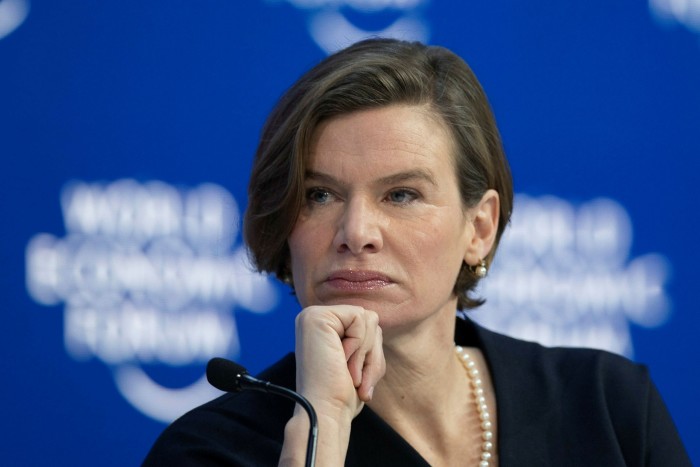
Economists of all persuasions also worry that the Biden plan, with its heavy emphasis on sending cheques to families, is poorly targeted and not nearly as focused on improving the potential for future growth as they would like. Randall Kroszner, former Federal Reserve governor and now deputy dean of the University of Chicago’s business school, says the heavy fiscal stimulus in response to the pandemic is appropriate, but the debt created does have a cost.
“It does have to be paid back by future generations so it is very important to make sure there is a return to that spending,” he says.
If that was not difficult enough, others warn that Europe cannot simply ape what America is doing, partly because it does not have the same access to finance and partly because there is more scepticism that it is possible simply to “build back better” just by borrowing and spending.
Robert Chote, the recently departed head of the UK Office for Budget Responsibility, says the outlook for fiscal policy outside the US is likely to focus less on the stimulus debate and more “on the severity of any long-term scarring of the economy — which is hard to estimate with any confidence”.
He adds that the public finances are more complicated than thinking about stimulus. Governments, for example, would soon need to consider raising taxes, especially if they “feel the need to spend a permanently bigger share of national income on health and social care after the pandemic than before it, to build more resilience into the system”. These structural public finance questions will not go away easily once economies have recovered.
For now, however, all eyes are on the huge stimulus numbers coming from the US. Its new government is planning to borrow and spend and Yellen has called on the rest of the G7 to follow suit. As Rogoff says, the experiment is likely to be global. “If it goes wrong for the US, it goes wrong for everybody.”
Comments